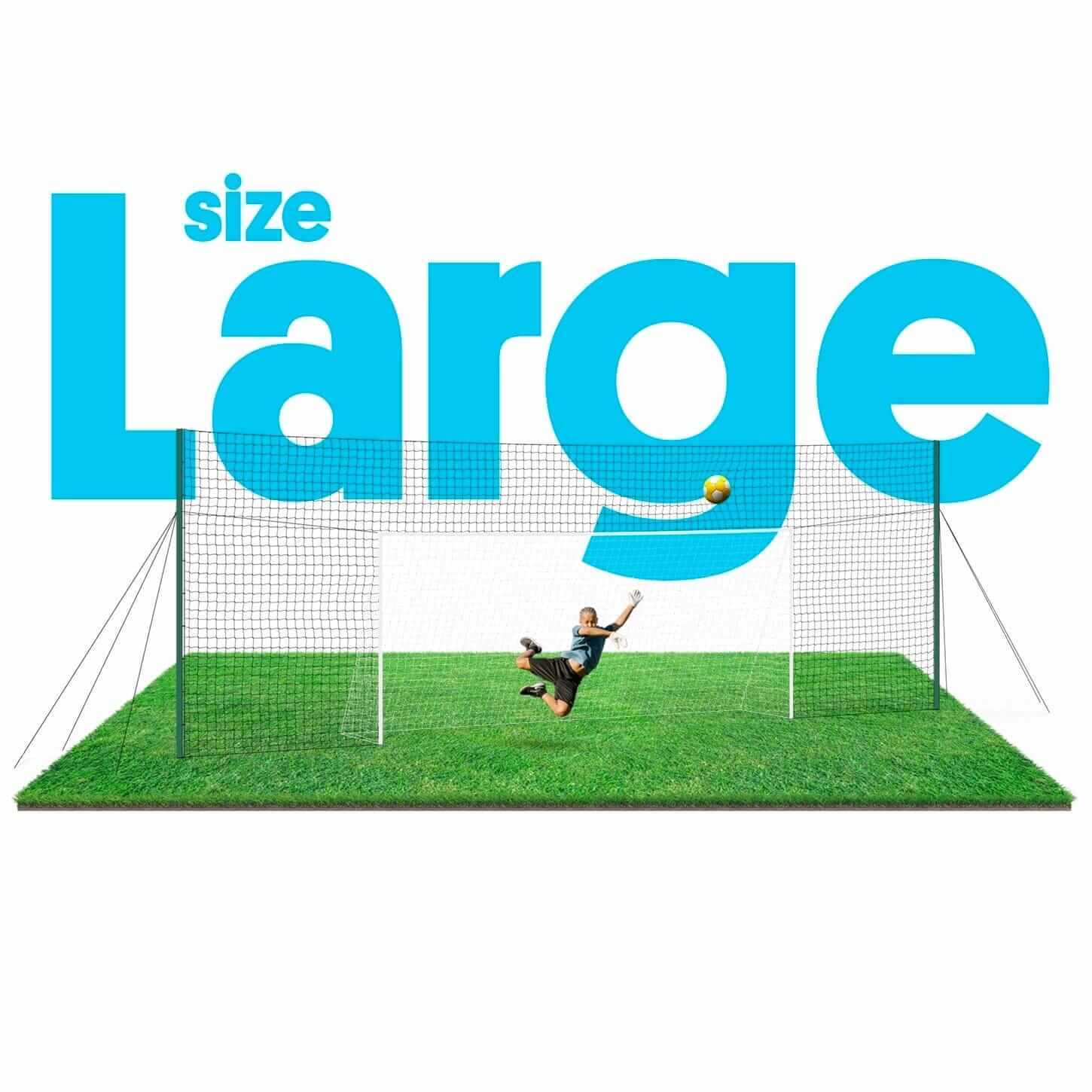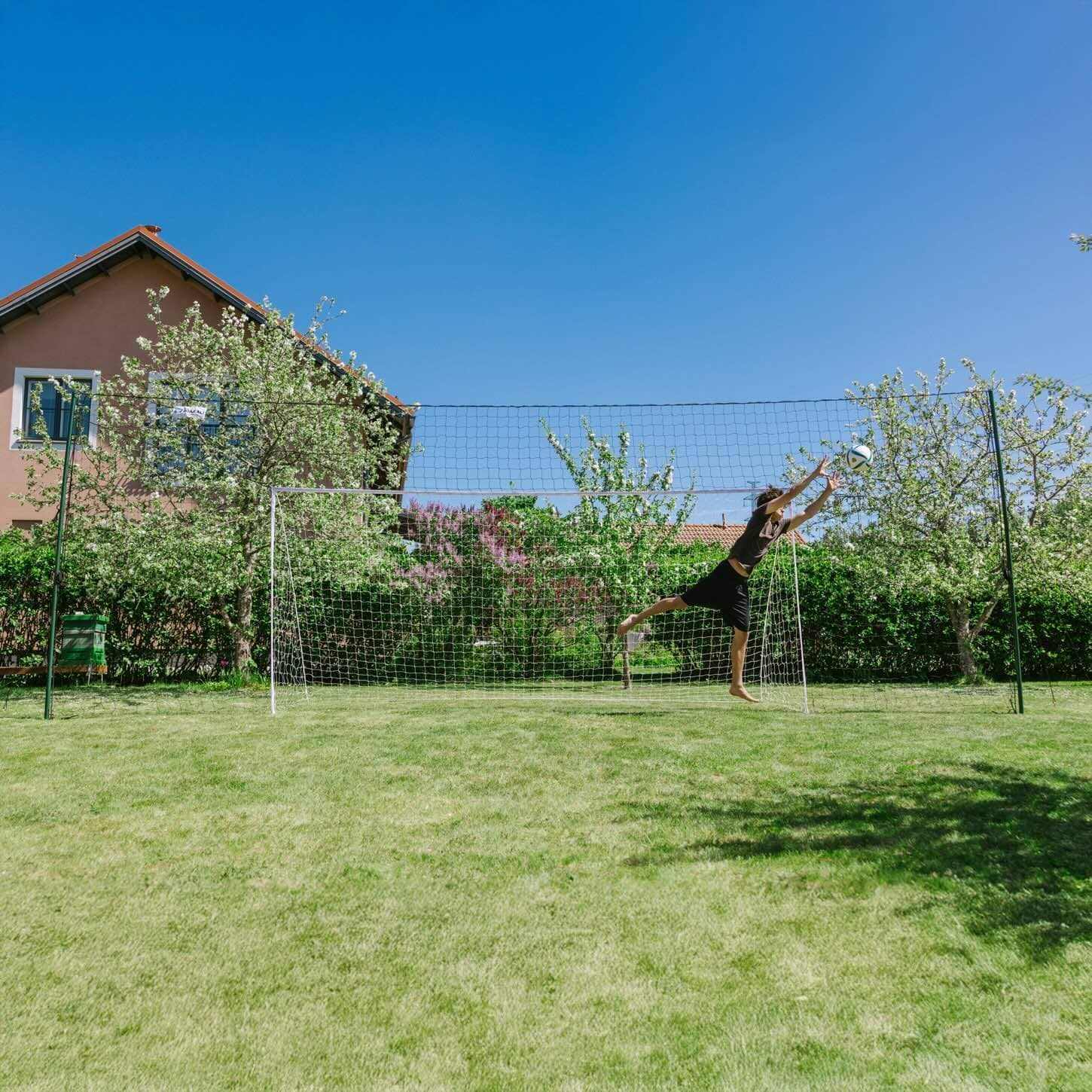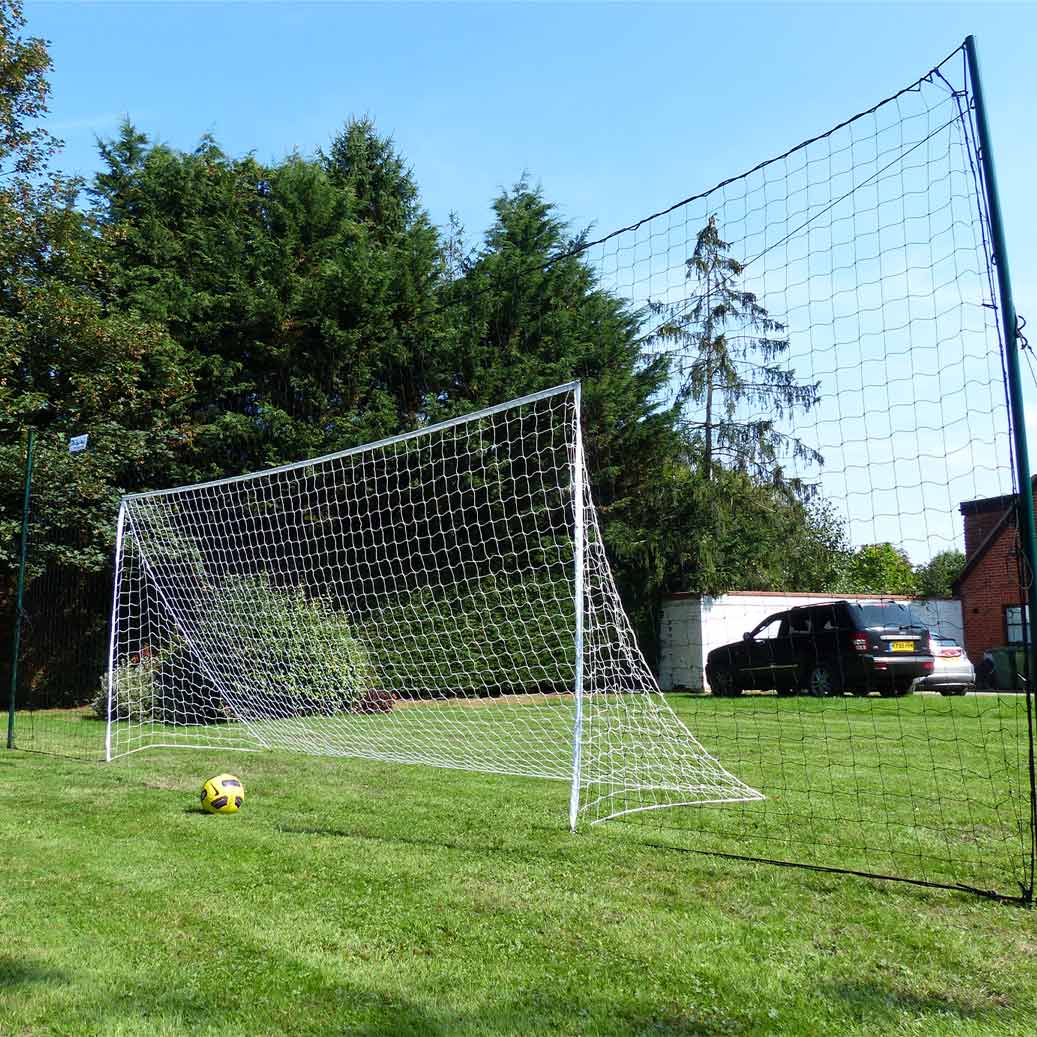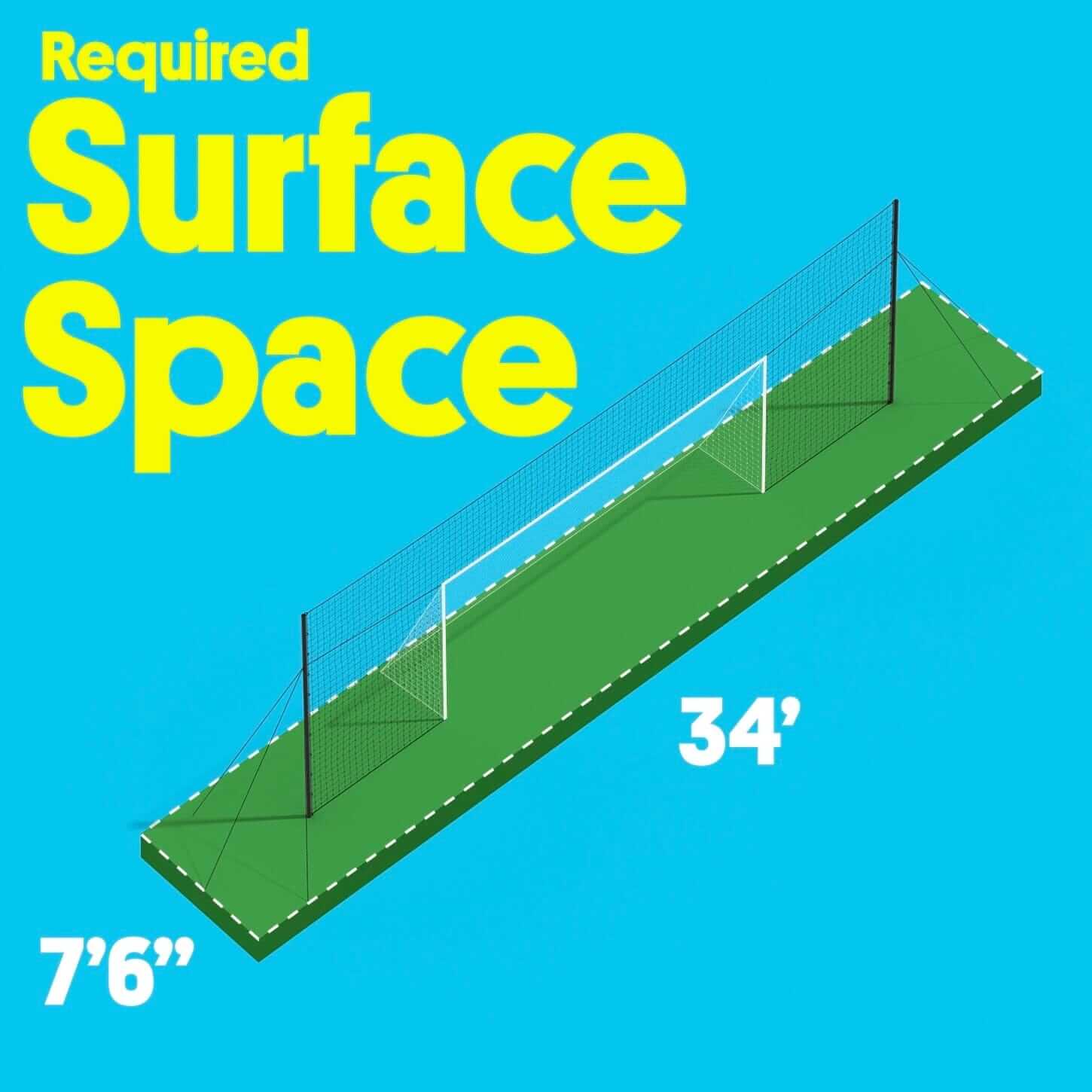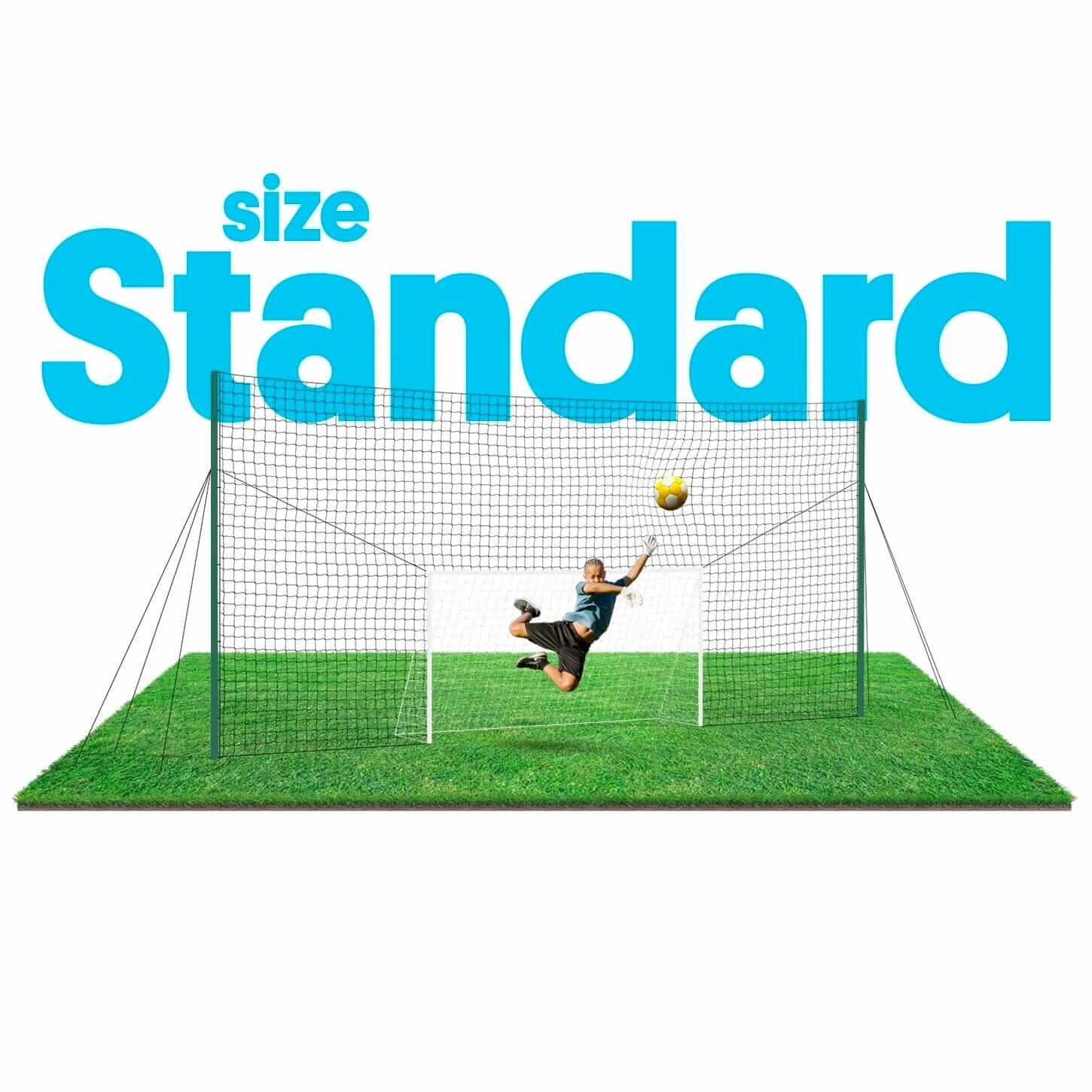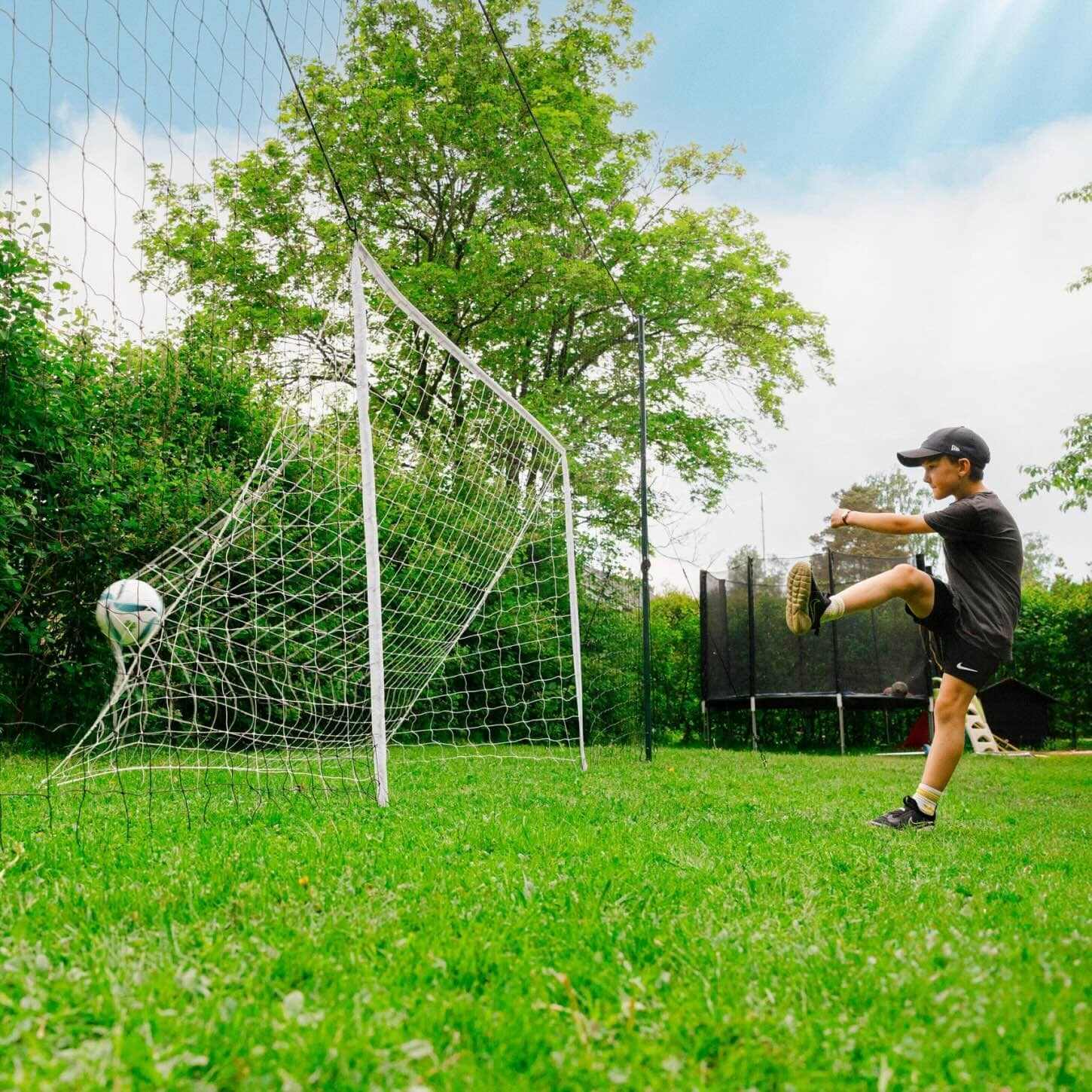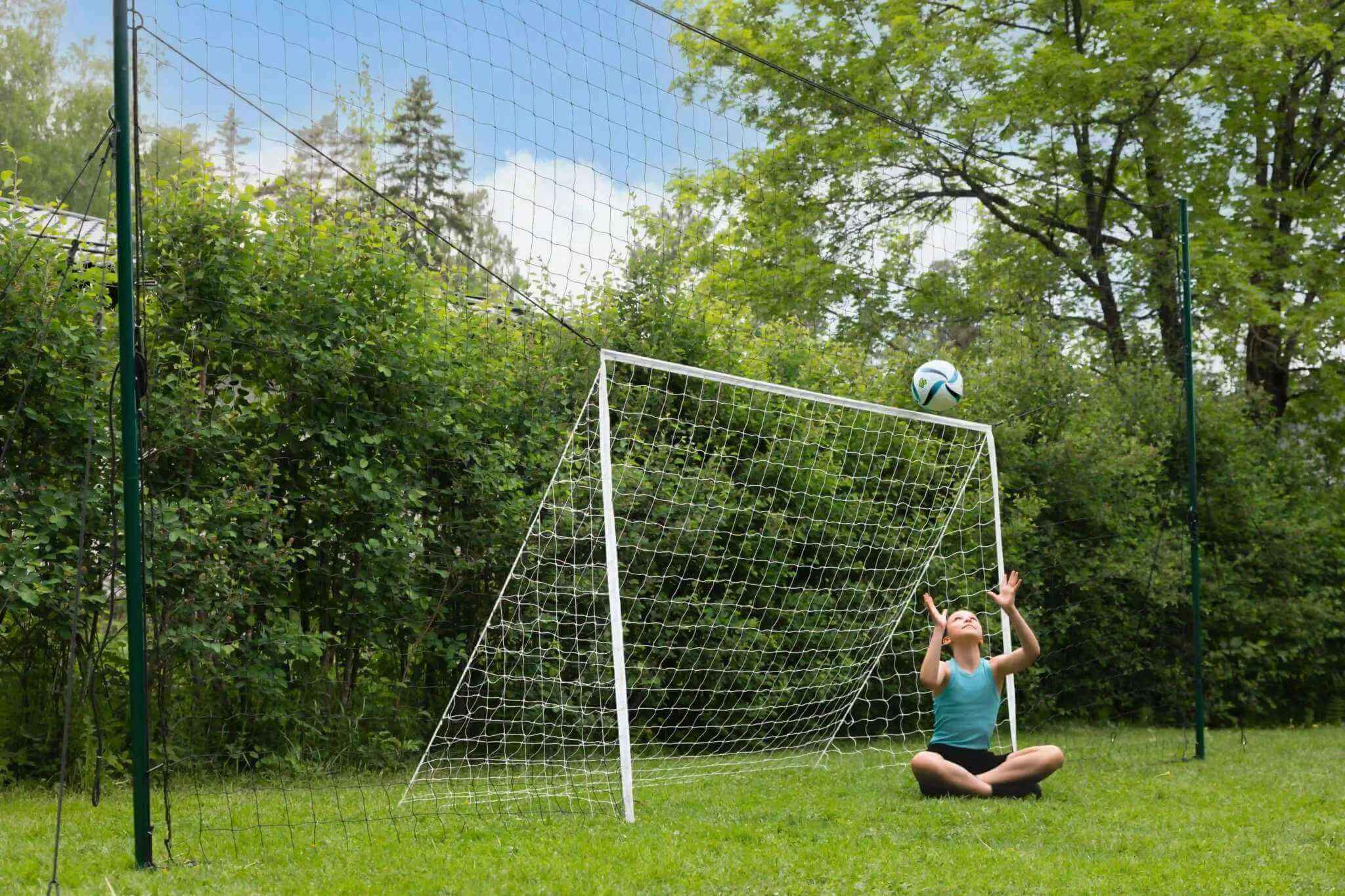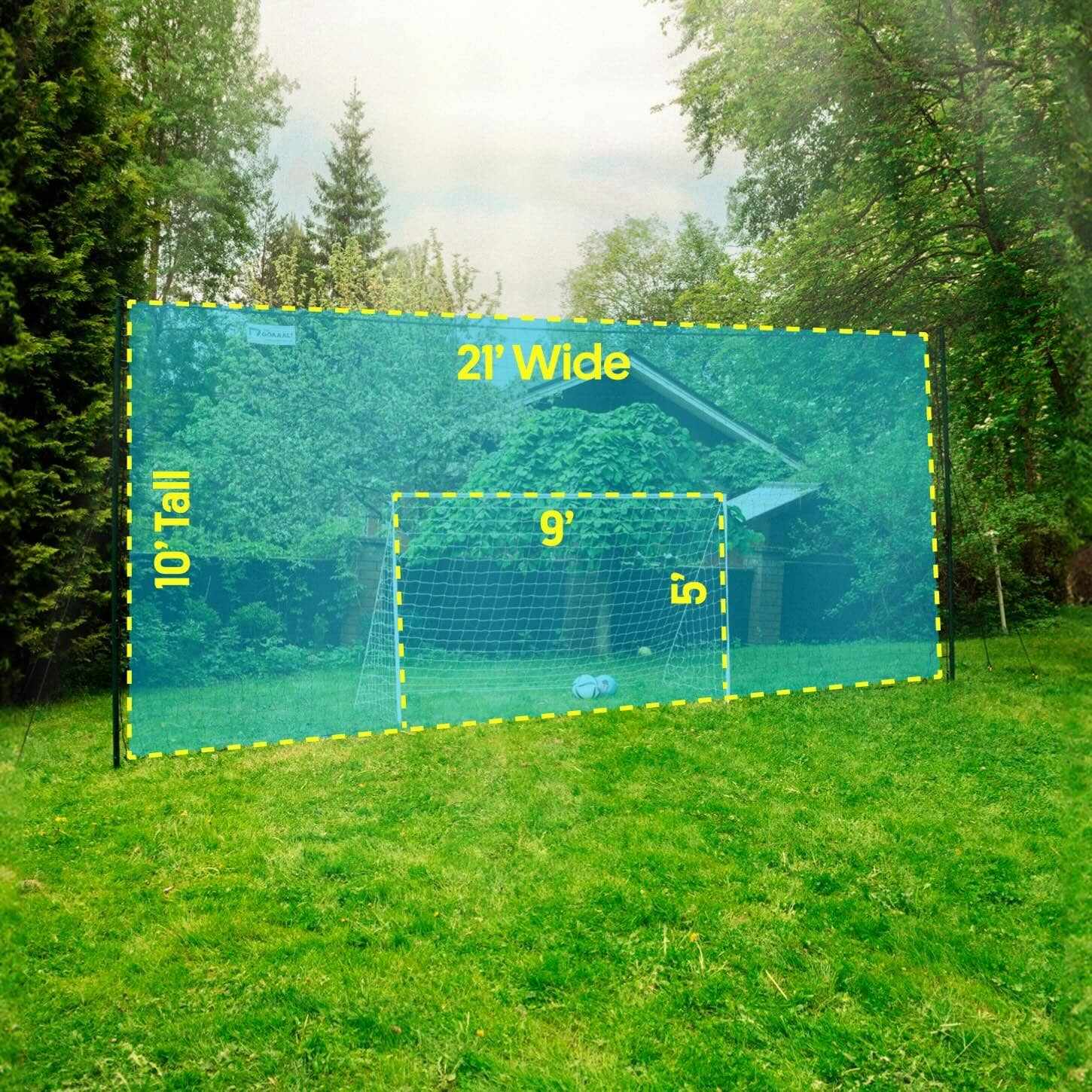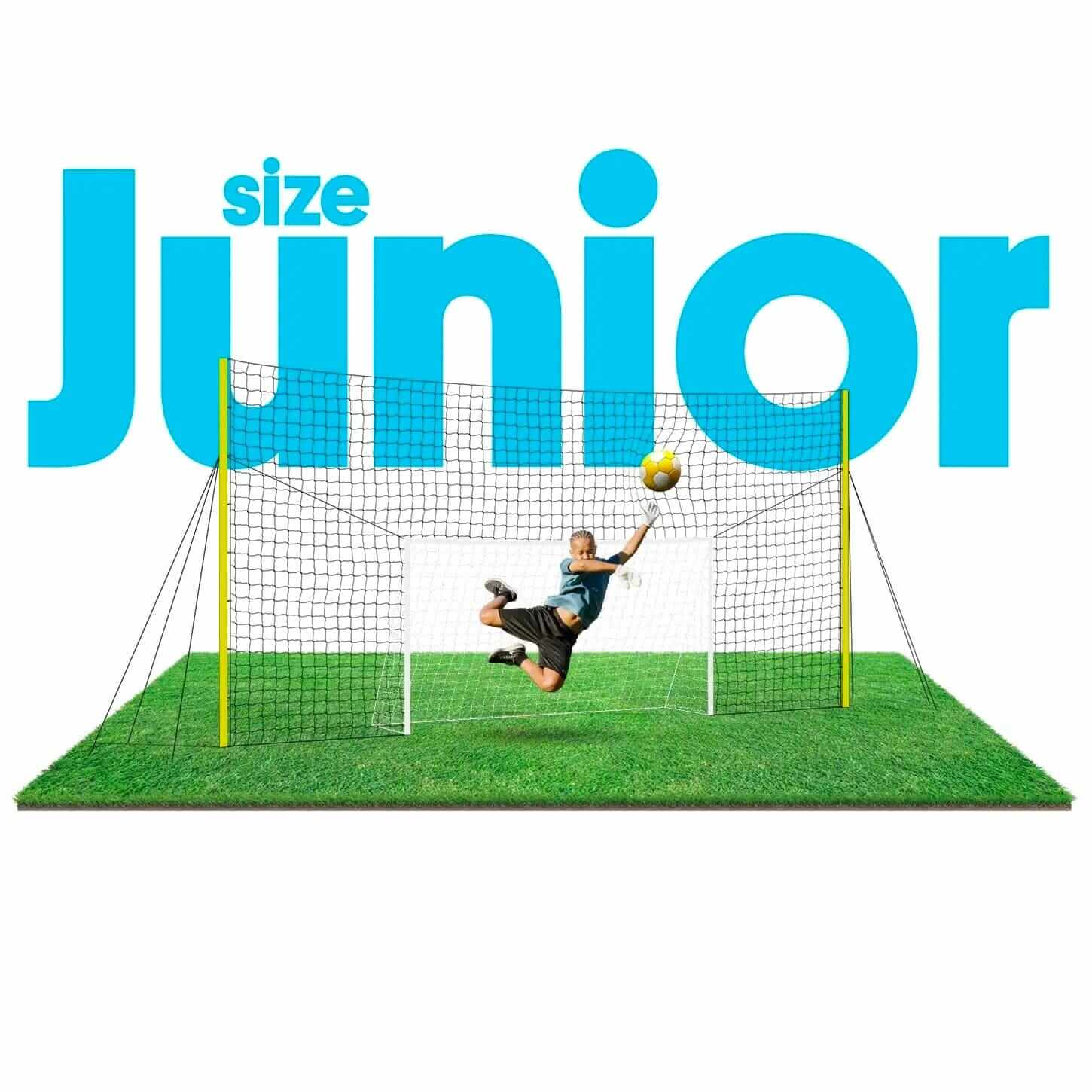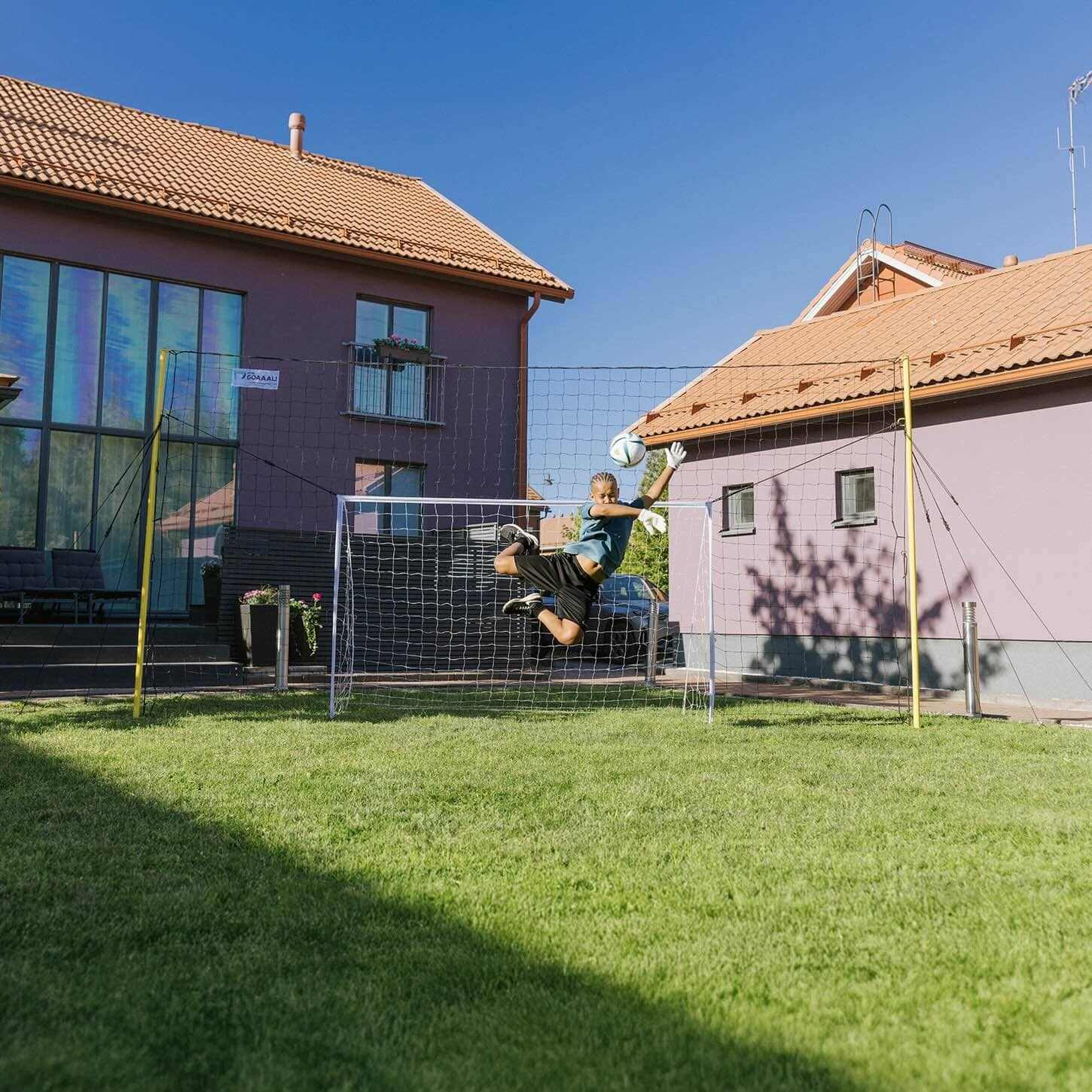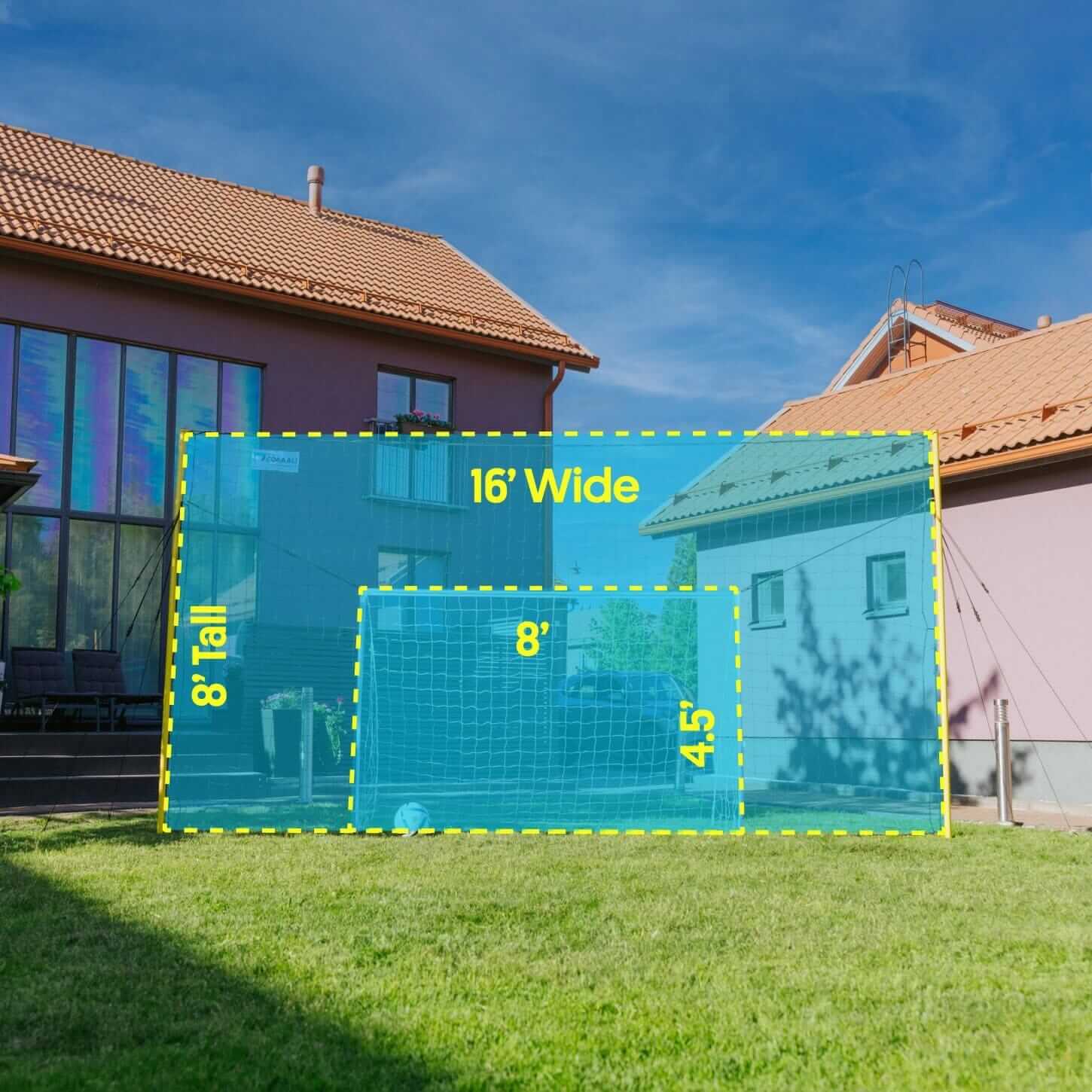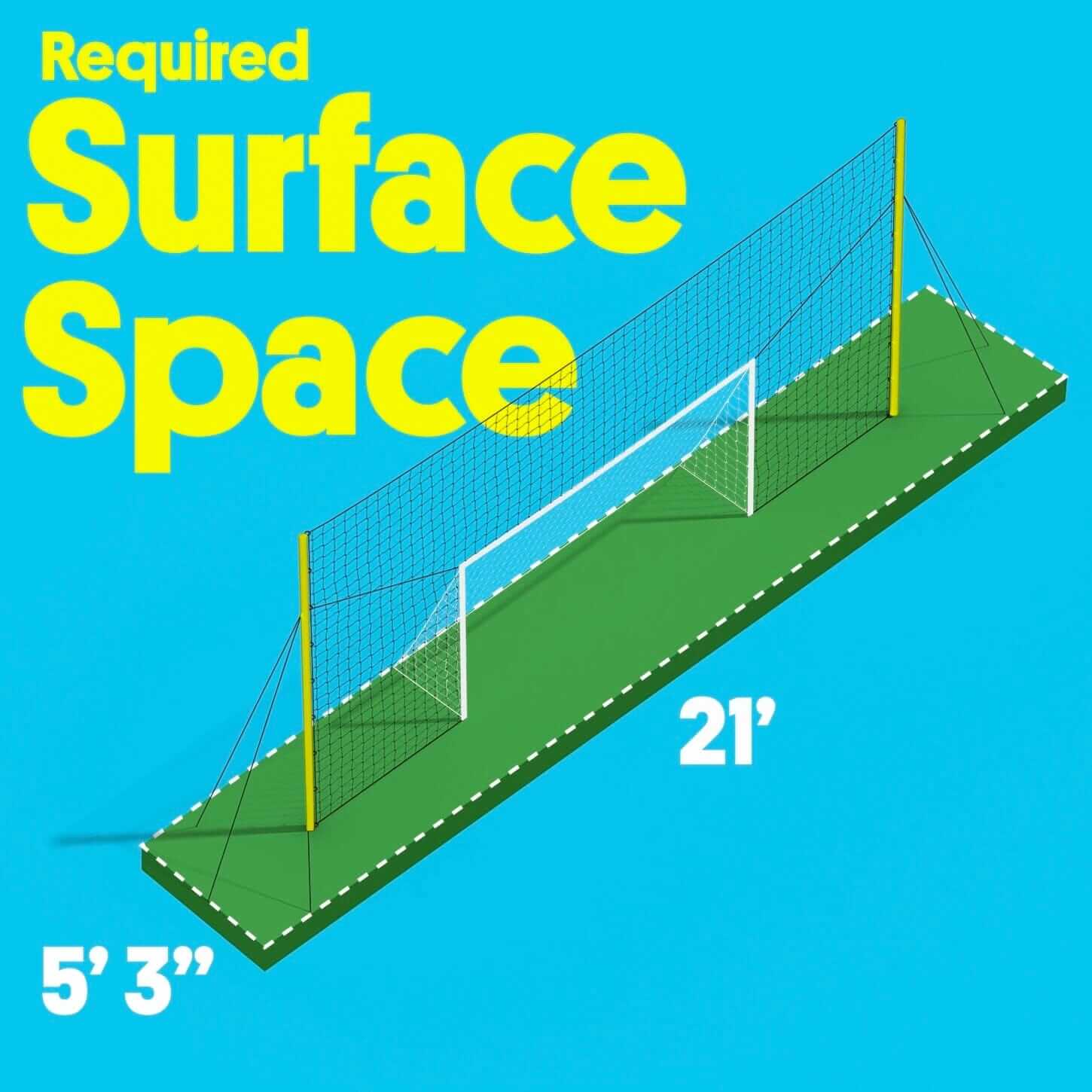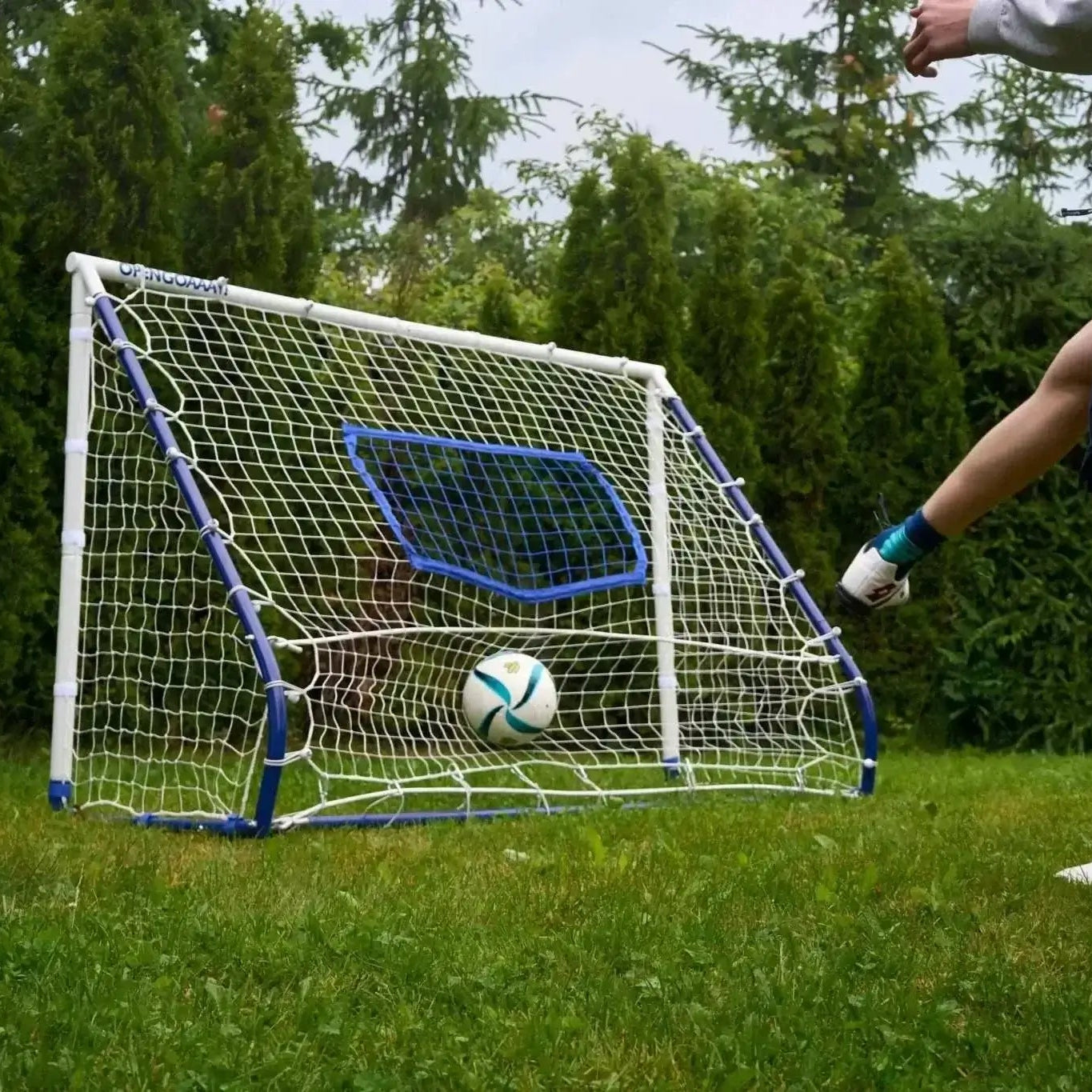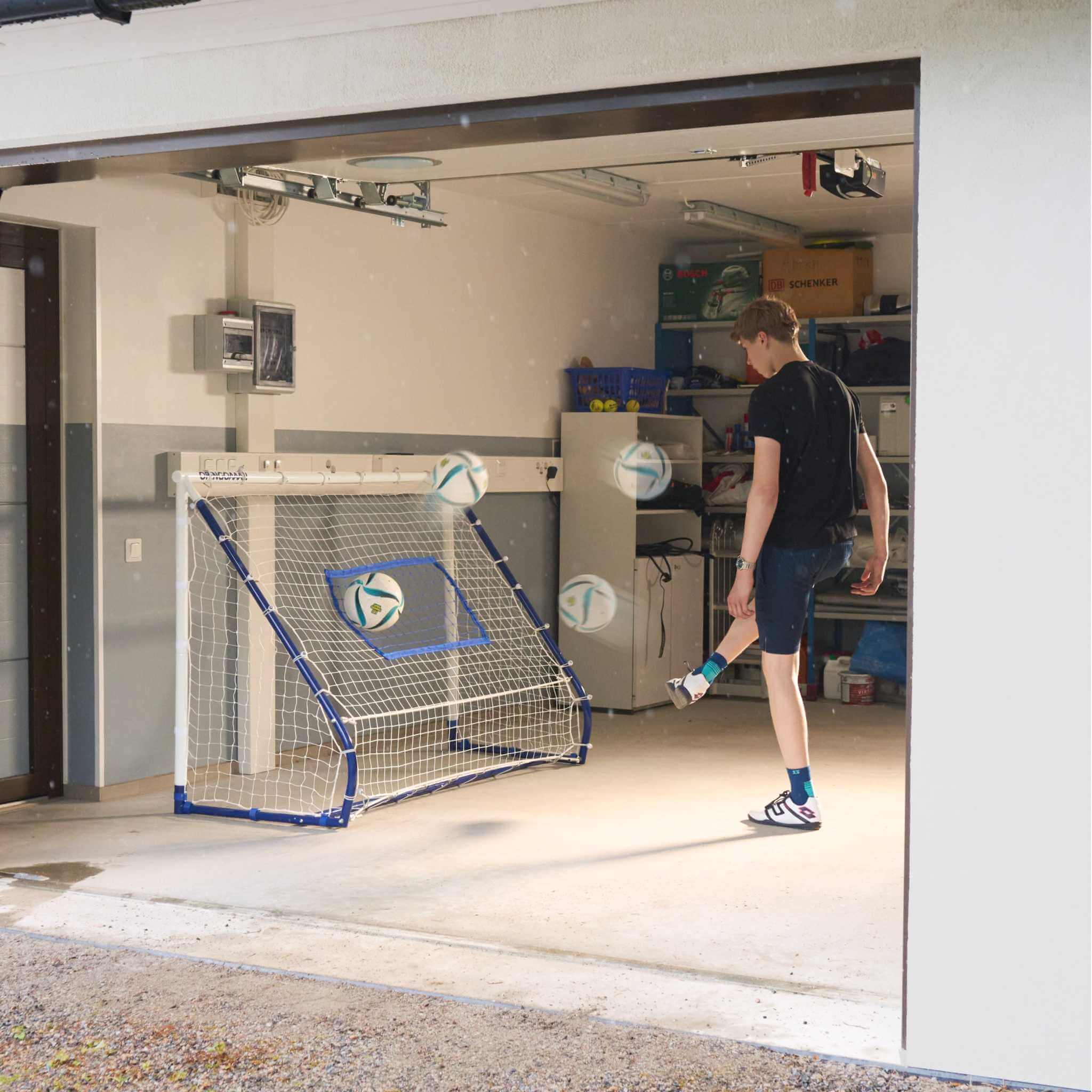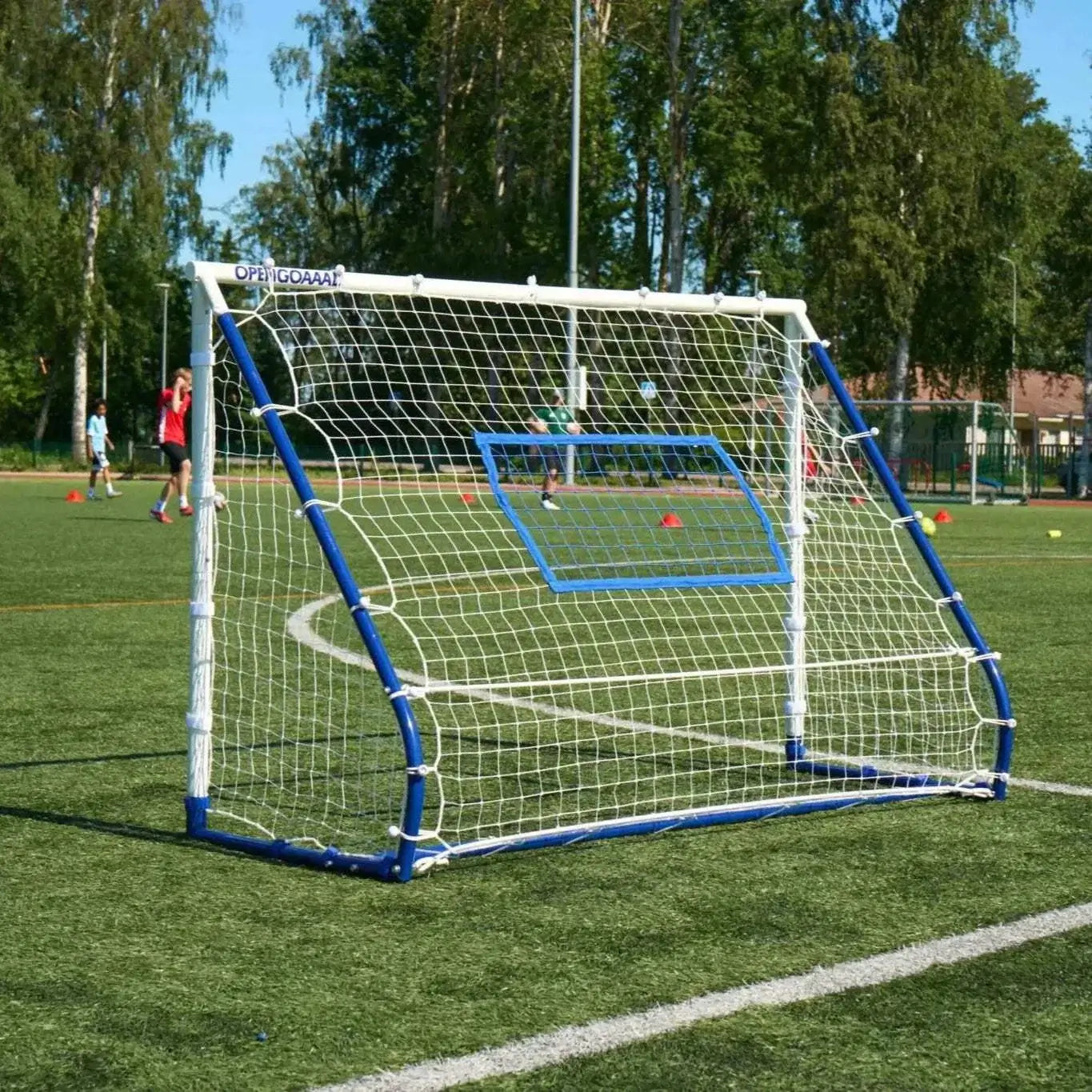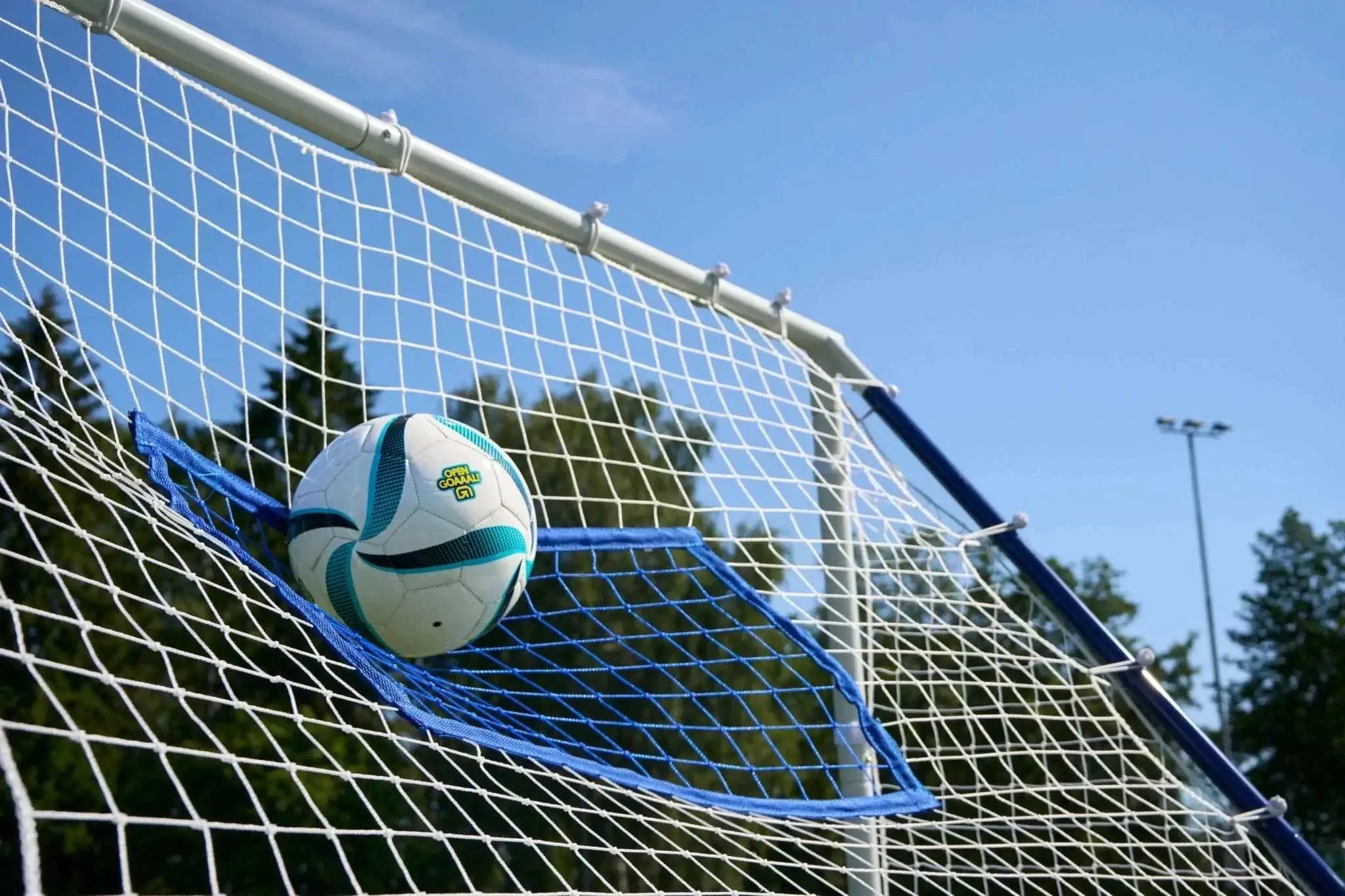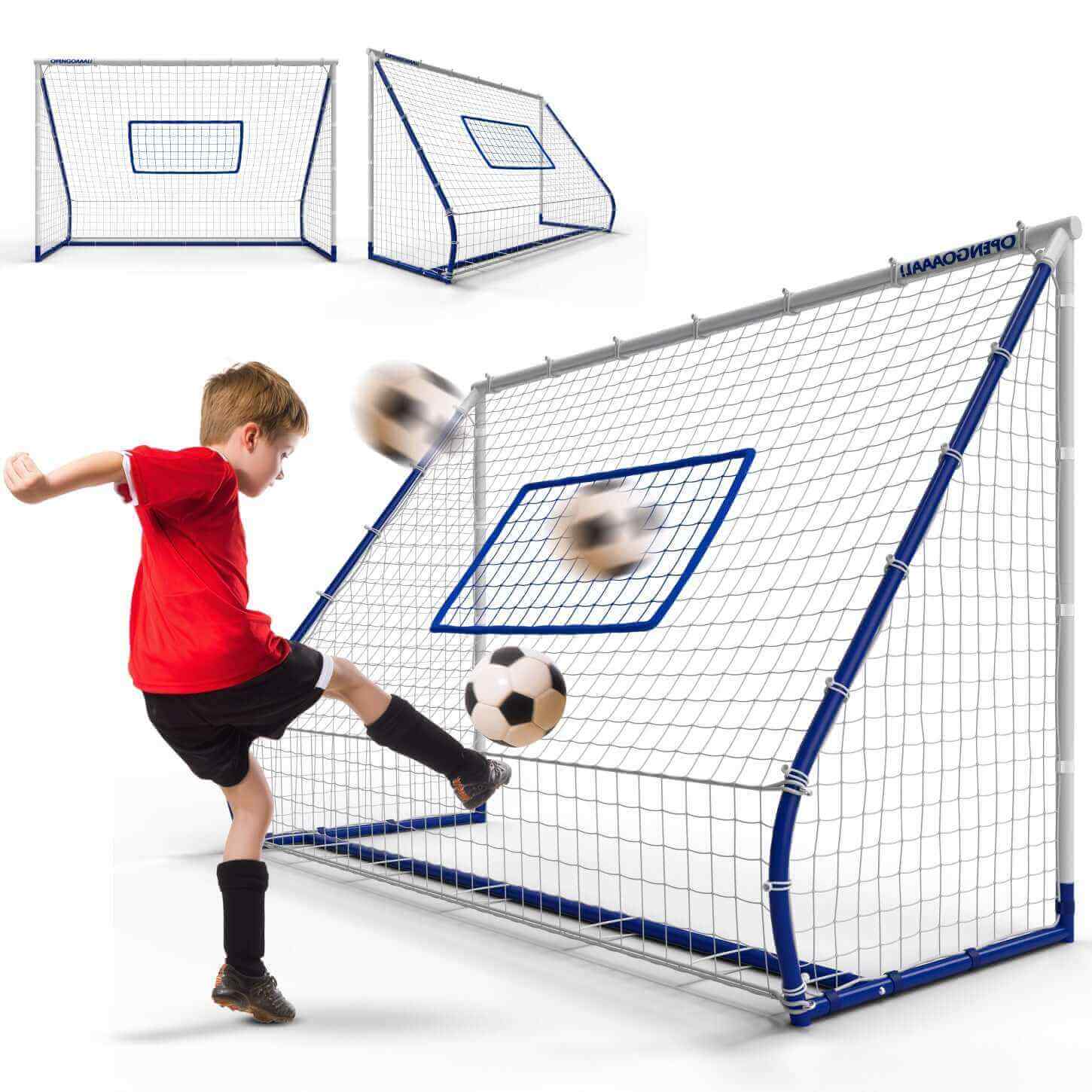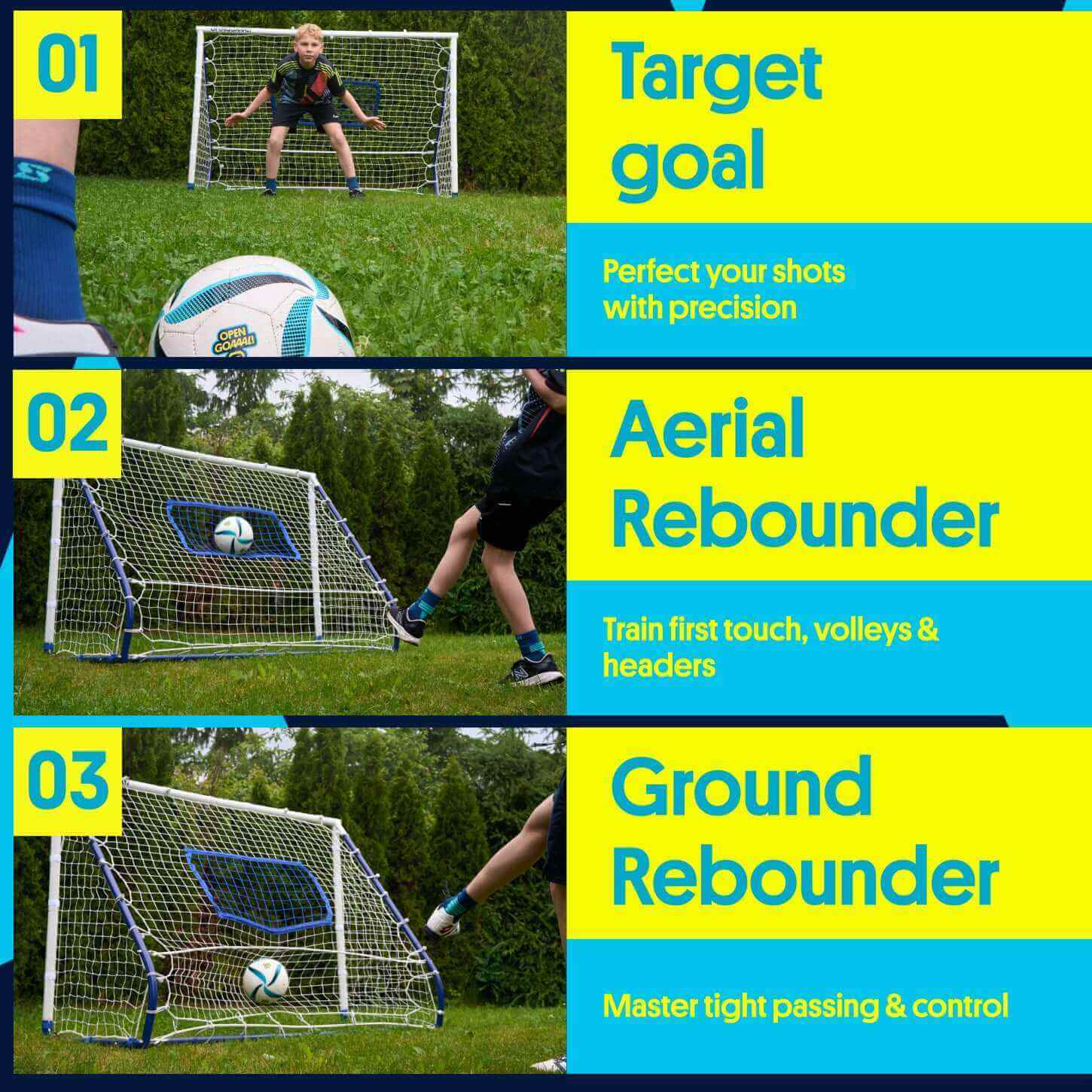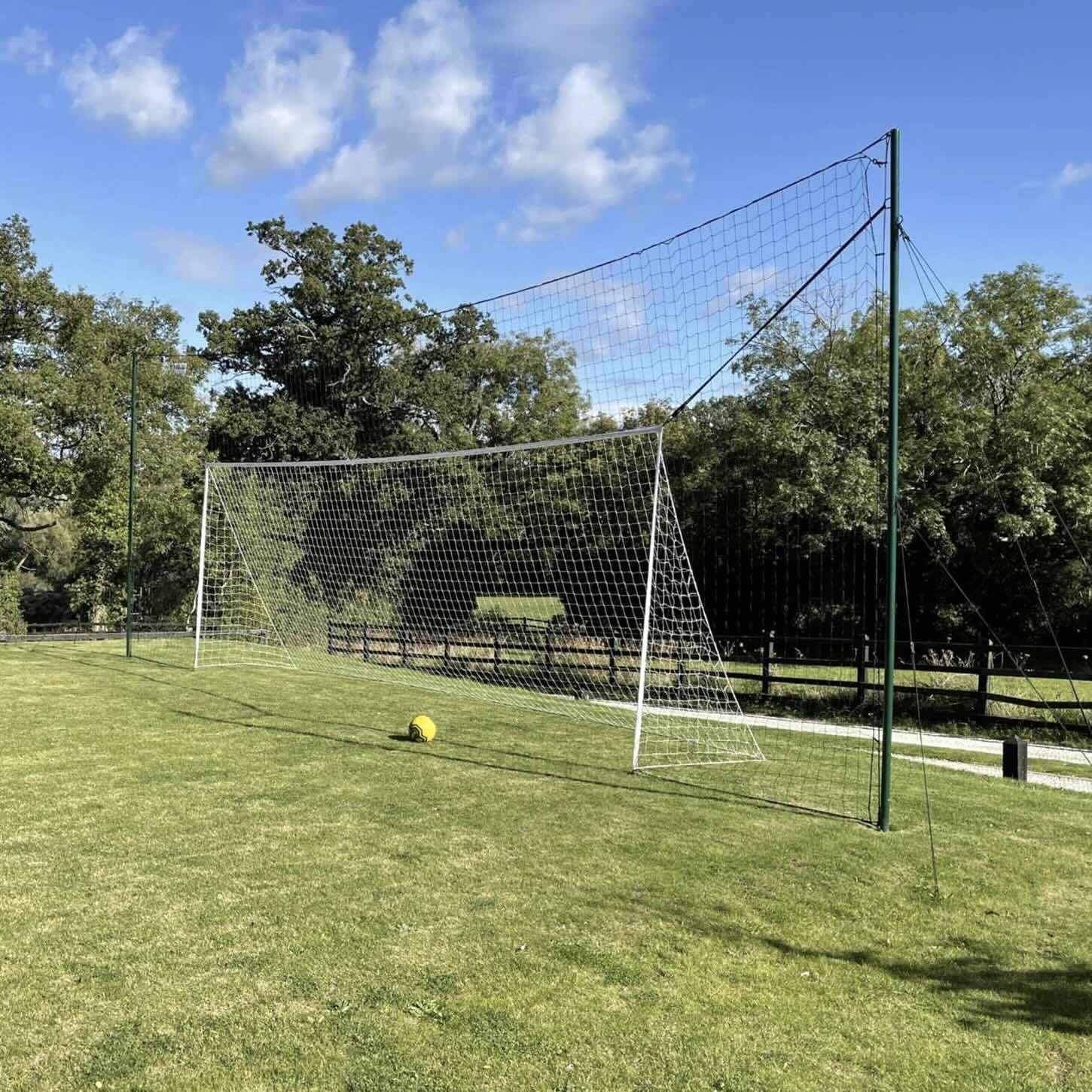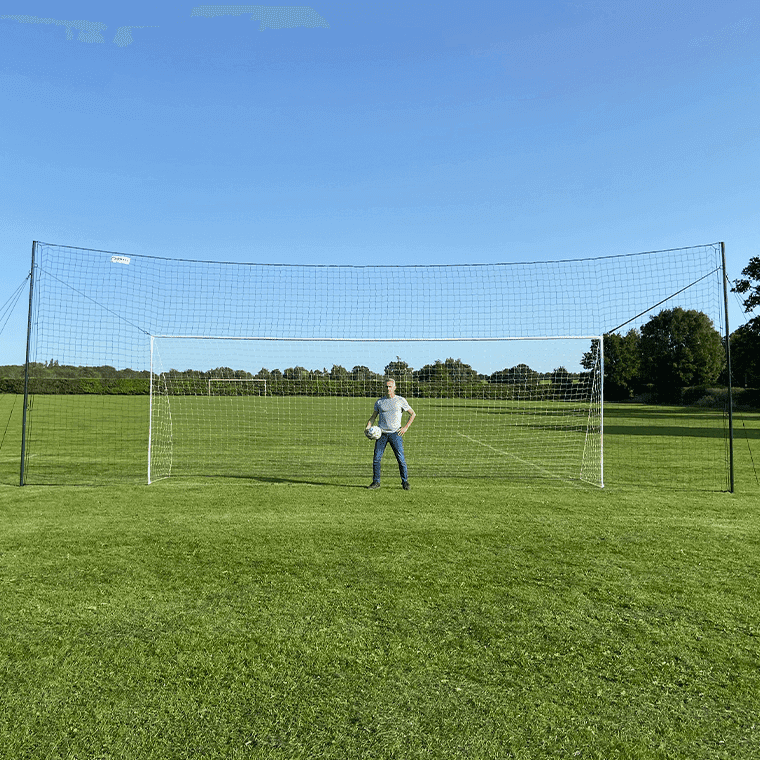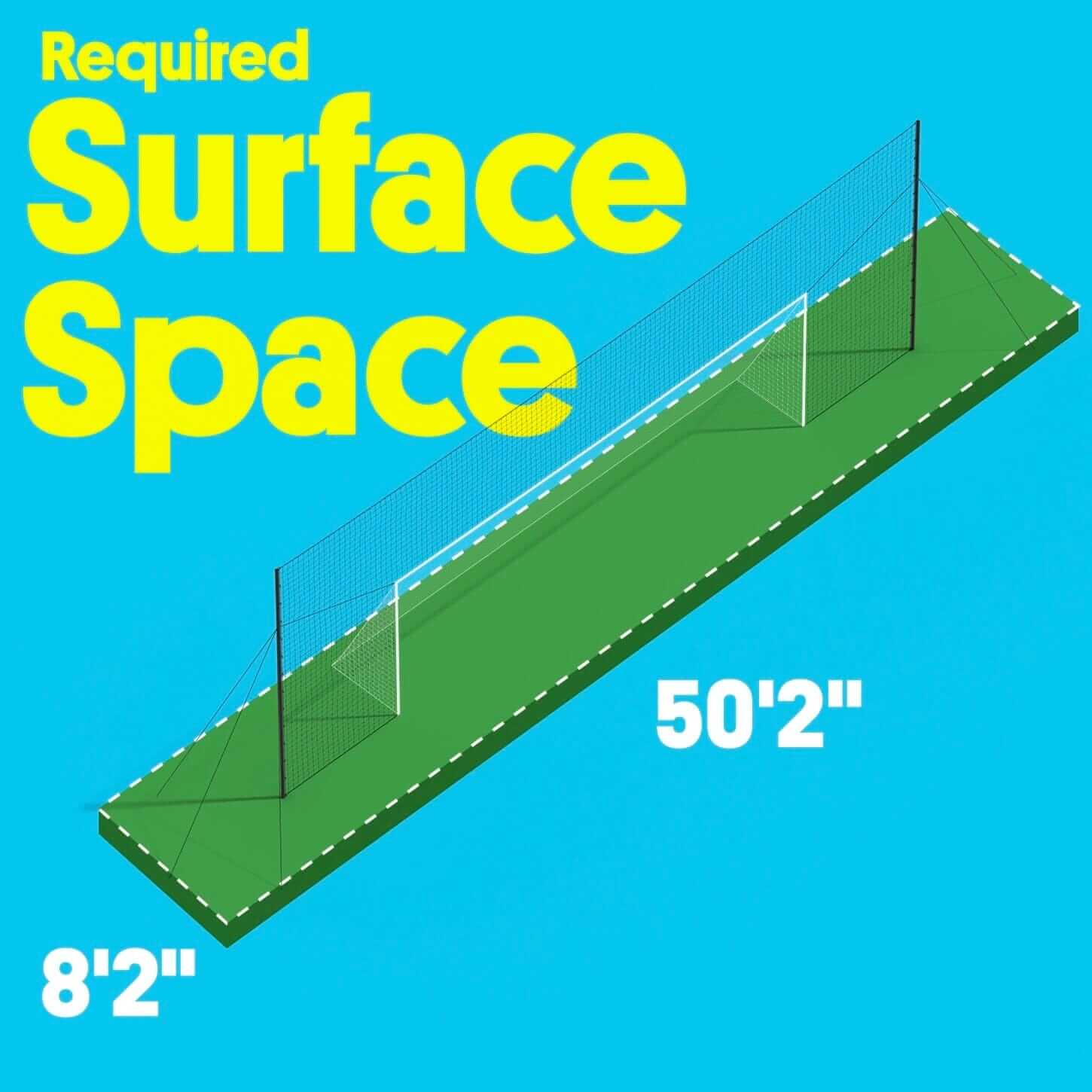Are you finding it difficult to practice your soccer drills with a wall sometimes? Do you have to call up a friend to be your soccer trainer? To anyone into the sport, soccer is a serious business requiring extensive training.
Luckily, we have lots of soccer training equipment in the market today. Plenty of them can help us do our passing and trapping skillfully and with ease. One of these must-have items is a soccer rebounder.
What is a Soccer Rebounder?
A soccer rebounder is a soccer training equipment used to work on everything from ball control to passing in short-range. Use it for coaching or daily training exercises in your backyard. Some are made out of a polyester net that helps the ball bounce back higher. For others, it comes with a polyethylene net with low bounce just enough for your daily ground passing and mastering control over the ball.
Either way, both work to help us build strong muscle memory, improve our soccer kickbacks, and discover powerful techniques to get through any game. If we're looking for more items to get your soccer game on, like soccer kickbacks, goals, and the like, check out this quality soccer training equipment.
How do you use a soccer rebounder?

Though we are free to create our own, here are five great soccer drills for us to work on with our rebounder or soccer kickbacks.
Pass and Trap.
Passing is one of the first skills you have to develop to work well with a team. Learn how to advance in the playing field by maneuvering the ball coming from the rebounder. The best part about it is you won't need someone to throw the ball at you. Compared to a wall, it is excellent at mimicking the angle of a human kick as well.
An easy trick to use the rebounder is to imagine it as your teammate passing the ball to you every time. Consider it a warm-up session with the ball. Set a goal for yourself from 50 to 100 passes. By repetitively trapping and passing, your brain gets to understand what a good pass will feel like by the touch of your foot.
Let's challenge ourselves to close our eyes after counting to 100 and let our legs do the magic.
Ball Over the Head.
A ball over the head or volleyball passes are possible with a rebounder. Some rebounders are designed to return the ball to you, strong and high. To do this, we may want to test which angle you need to take on. Once it returns, bounce the ball back with your head.
Again, with repetition, we'll be able to master high-reach passes and get the ball going in the direction of the goal.
Overhead drills are also great when training with a team or a friend. Get someone to kick the ball in the upper portion of the equipment. Try to return it with a head pass, communicating to which player we plan to pass it on.
Receiving and Finishing.
Plan a simple obstacle course that can imitate a game. For example, replicate a center forward that can drop the ball back to the middle of the field. Receive it back under pressure and shift the ball to hit the goal. It may be a structured practice but gives our mind a framework of hits to help us in the field.
Adding two or three rebounders or soccer kickbacks at the side can also give you different options for passing and receiving the ball. If we don't want to keep getting the ball out of the goal after finishing, consider bringing two to three more. If you're looking for the best soccer goal for your backyard, Open goaaal offers them at a swell price.
Goalkeeping Skills
Goalkeepers are just as important! A rebounder is very useful to keep our feet and hands up and running against our enemy's kicks. Treat the rebounder as the offensive team, and don't let the ball get past you. We can even set up a goal right behind us and two to three different rebounders that we can hit and receive back.
Try to position close to the equipment and gradually move farther and farther away. It will give us a feel of the range that balls may come at us. Get different angles in the rebounder. Hitting its upper portion can give us an incoming volleyball, and a throw from below can send a fast one returning beneath us.
Move left and Right.
Simple but great advice. We can include this in your obstacle course, where you hit and receive from the rebounder and continuously run with the ball through hurdles and cones.
Many players are used to trapping running to the left or right, forcing them to use different parts of their feet and exposing a weakness. Learn to develop a technique in using certain parts of your foot as you are moving along. Be aware and continuously scan for imaginary teammates and move into space.
We will learn to be light on our feet, use both feet, and even communicate with our teammates once we apply the drill in-game.
Challenge Your Soccer Skills

To raise the bar higher, you can opt to add some of the equipment listed below to our list.
- Soccer Hurdles
- Cones
- Different Rebounders
- Bungees
- Training Sticks
- Speed Ladder
Pair them up with your rebounder and try to mix it up—place hurdles in the middle and shift in between the gaps. Get cones to make you move from left to right. Bungees to get that foot control. There is plenty of other equipment you can add to the training field. The sky's the limit.
How do you get better at soccer drills?
Training. No one gets better at anything overnight, much less soccer. Training exercises are vital to performing better and maintaining that skill as well. Invest in a soccer rebounder and quality soccer trainer equipment will get you reaping positive results. For sure, both us and our coach will notice the difference.


